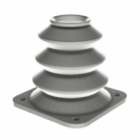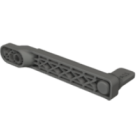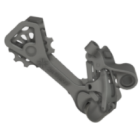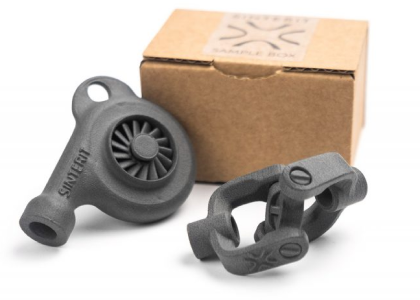3D printing facts
3D printing has become one of the most talked-about and transformative technologies of the 21st century. But beyond the headlines and buzzwords, there’s a rich ecosystem of innovation, surprising milestones, and lesser-known facts that reveal how far this field has come — and how much potential it still holds. Understanding these facts about 3D printing isn’t just entertaining; it gives valuable insight into the technology’s capabilities, impact, and future.
1. Not as new as you think
Although many perceive 3D printing as a futuristic concept, the first 3D printing patent dates back to 1984, when Chuck Hull developed stereolithography (SLA). That means the evolution of 3D printing spans over four decades, with early machines already capable of turning digital files into tangible objects long before it became accessible to the public.
More about the history of 3D printing here.
2. Beyond plastic: from chocolate to titanium
While most people associate 3D printing with plastic prototypes, the reality is far broader. Today’s printers work with:
- high-performance polymers like PA11, PA12, or TPU,
- metals like aluminum, stainless steel, and titanium, and
- even edible materials including sugar, chocolate, and dough.
These material innovations have enabled printing in aerospace, medical, dental, jewelry, and even culinary sectors.
3. You can 3D print a house (yes, really)
One of the more mind-blowing facts about 3D printing is that entire buildings — including walls and structural components — can be 3D printed using large-scale gantry systems and concrete-like materials. Construction 3D printing is still emerging, but it’s already proven its value in disaster relief, affordable housing, and remote site fabrication.
4. 3D printing is already in orbit
3D printing isn’t limited to Earth. NASA has sent 3D printers to the International Space Station (ISS) to help astronauts produce spare parts, tools, and research equipment on-demand — without relying on supply shipments from Earth. It’s a small step for a printer, but a giant leap for long-term space missions.
5. Waste reduction and sustainability
Unlike traditional subtractive manufacturing, which cuts away material, additive manufacturing only uses what’s needed. This creates less waste, making 3D printing an inherently more sustainable option — especially in prototyping, tooling, and short-run production. Recyclable and bio-based materials are also gaining traction, contributing to greener supply chains.
6. 3D printed organs are in development
Bioprinting is pushing the boundaries of what additive manufacturing can do. Research teams around the world are working on printing tissues, blood vessels, and even early-stage organs using bio-inks made from living cells. Though full organ printing is still in development, the progress is remarkable.
7. Custom prosthetics for under $50
In regions with limited medical resources, makers and NGOs use 3D printing to deliver low-cost prosthetic limbs — often for under $50. These devices are not only cost-effective but custom-fitted to each user’s anatomy, improving both comfort and function.
8. The food industry is using 3D printers
3D printing isn’t just for machines and materials — it’s also entering kitchens. Edible 3D printing is now used to make custom chocolates, intricate sugar sculptures, and pasta with unique geometries. Michelin-star chefs and food tech companies are experimenting with it for both creativity and consistency.
9. There’s a 3D printed hypercar
Several high-performance automotive projects now include 3D printed structural parts, but one of the most radical examples is Divergent’s Blade — a 3D printed supercar chassis that’s lighter and stronger than traditional builds, produced using DMLS and carbon-fiber nodes.
10. 3D printing is helping save endangered species
In conservation, 3D printing is used to create prosthetics for injured animals, replica eggs for nesting studies, and even artificial coral reefs to regenerate marine habitats. The ability to rapidly prototype and deploy customized solutions is changing the way biologists solve complex environmental challenges.
Summary
Whether it’s 3D printing in space, creating sustainable food, or developing bioprinted tissues, additive manufacturing continues to redefine what’s possible. These 3D printing facts highlight the innovation, versatility, and unexpected impact of this still-evolving field. And while we’ve already come a long way since 1984, the future is just beginning — one layer at a time.
Explore also
- What is print 3D? Concept of 3D printing
- What does “3D printed” mean?
- Example of 3D printing
- How does 3D printing work?
- Slicing in 3D printing
- What do you need for 3D printing?
- 3D printing benefits
- Is 3D printer dangerous? Understanding the real risks
- 3D printing issues
- 3D printing history
- Who uses 3D printers? Not just for engineers anymore
- Where 3D printing is used
- 7 common 3D printing myths
Related categories













